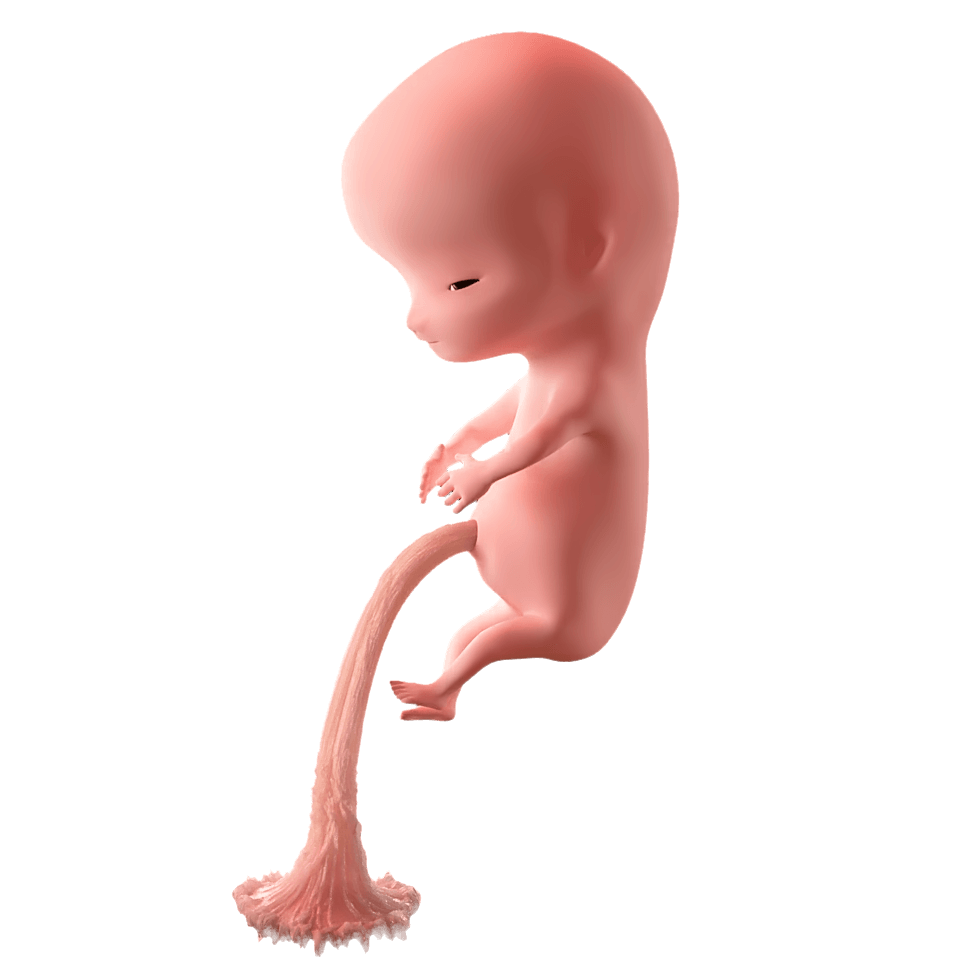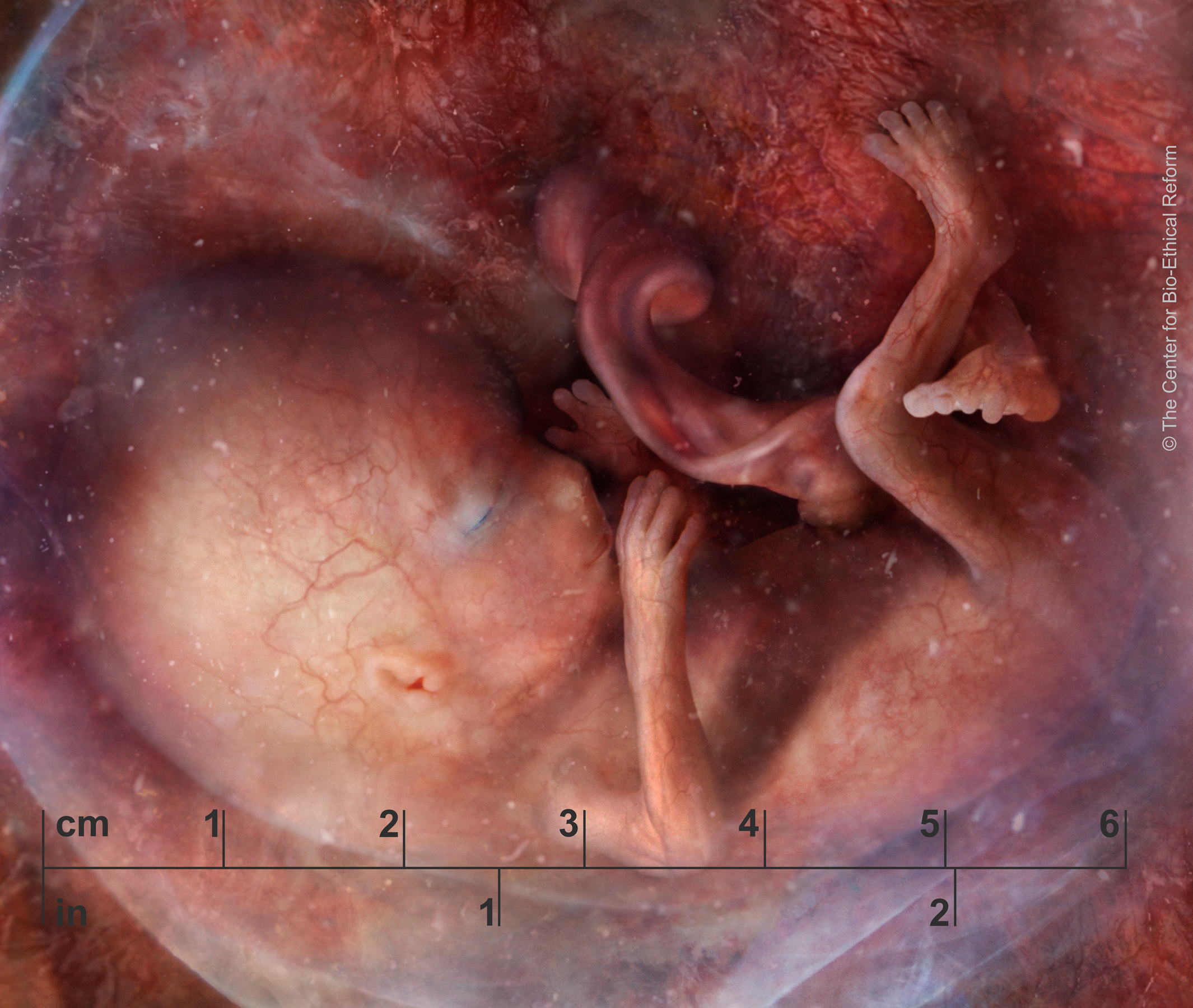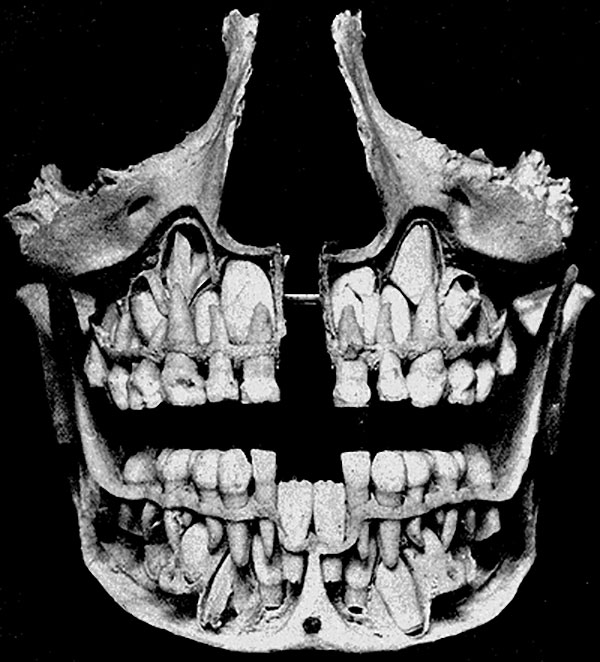Humans have two sets of teeth because a child’s jaw is too small to fit the adult teeth. Plus, the second set of teeth lets accidents and poor dental hygiene have fewer long term consequences.
Become A Defender of Life
Your donation helps us continue to provide world-class research in defense of life.
DONATECharlotte Lozier Institute
Phone: 202-223-8073
Fax: 571-312-0544
2776 S. Arlington Mill Dr.
#803
Arlington, VA 22206

Week 12
Growth spurt, nails, and fingerprints
- Post-conception week 10
- Days 63-69
- Gestational Week 12

By 12 weeks, the fetus responds to light touch on the face, palms of the hand and soles of the feet.6 A light touch on the sole of the foot may cause the fetus to bend his knee and curl his toes.7 The fetus continues with complex behaviors, such as thumb-sucking, swallowing, and stretching.8
The first recorded eye movements come from week 12. When something touches the upper eyelid, the eyes roll downward and the muscles around the eye ‘squint’.9 Furthermore, if researchers touch the palm of the fetus’s hand at this age, she curls her fingers in towards the object, but not her thumb. The fetus does not include her thumb in grasping an object until about 15 weeks.10
Teeth start as buds in week 9. They form from the interaction of cells near the early neural tube, called neural crest cells, and the external tissue layer, called ectoderm. Basically, the enamel coating on teeth comes from the ectoderm while the inner structure of a tooth, including the roots and dental pulp, comes from the neural crest cells.11 Around 11 weeks, the bud of a second tooth starts to form behind the first tooth. The second tooth will slowly develop into the permanent adult tooth. The first tooth to form becomes the baby tooth.12 Next, the jaw bone forms around the baby tooth and permanent tooth, holding them in place. Then the tooth grows by adding layers of dentin inside the tooth and enamel outside the tooth. Finally, the baby teeth start to poke out of the gum, starting roughly six months after birth.13 Most children have their full set of 20 baby teeth by age 2. Permanent teeth form inside the jaw bone through early childhood. When children shed their baby teeth, only the crown and the uppermost part of the root fall out. The permanent teeth use the same artery and bone socket that the baby teeth used.14 Adult teeth replace the baby teeth throughout childhood.









